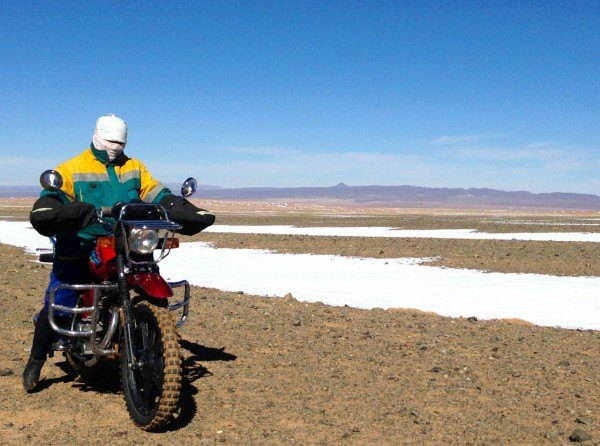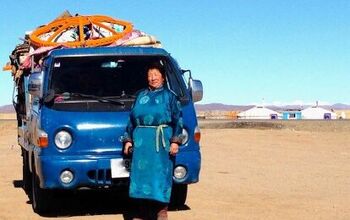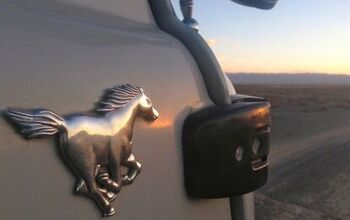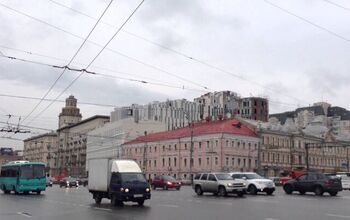Best Selling Cars Around The Globe: Trans Siberian Series Part 13.2: Which Cars Survived The Gobi Desert
Today we continue on our Trans-Siberian adventure. The last update was just an introduction to the Gobi desert region, now we are getting serious. Traversing the harshest terrain in the Gobi desert took us 4 days on an often disappearing track, only rarely flat. Needless to say only the sturdiest four wheel drives are allowed here.
If you can’t wait for the next report, you can follow my trip in real time here, or check out 174 other car markets on my blog.
Now you might question my sanity doing a Car Photo Report on potentially one of the areas in the world with the fewest cars around, and I would forgive you for that. But spotting the rare vehicles able to survive in this environment already tells a fascinating story in my view. Firstly, I will attempt to explain the role of a motorised vehicle, two- or four-wheeled, in the Gobi desert. Remember there are 13 horses for each human being in Mongolia, plus wild and domesticated camels roam the desert by the thousands, so any motorised vehicle may seem superfluous at first.
The inhabitants of this region, which is one of the most inhospitable in the world, are one of the most hospitable people I ever got the chance to meet. All live in traditional gers, with their most valuable possessions for the most part being horses, camels and/or goats. A lot of these families are 100% self-sufficient and live off their animals’ meat and dairy products (the best I ever tasted in the world – and I’m French!), and sometimes a bit of tourism. They move around once the sparse vegetation around their camp has been consumed by their animals, which sometimes can mean a weekly displacement.
To give you an idea of the hospitality of these people let me briefly recount two stories. In the first ger camp we arrived at, right in front of the Khongoryn Els dunes, our hostess, who had already retreated to her winter camp 45km away, didn’t think twice about riding her motorbike across mountains and sand dunes (yessir!) to come meet us, take us on a camel trek, and spend an evening drinking Golden Gobi beer and playing very involved shagai (ankle bones) games with us.
A couple of days later, we couldn’t reach our scheduled ger camp before sunset because of a few tiny issues with our car (which I will relate in my next Gobi post). Not to worry, we literally crashed in at a family’s camp, and our local driver asked whether we could sleep here for the night. That actually meant one member of the family had to go sleep in the next ger camp kilometers away to let us 3 sleep on the floor of their only ger, which they did not hesitate one second doing, on top of it cooking us one of the most delicious breakfasts you’ll ever get to eat, and inviting us to watch how they milked their horses, goats and camels. That’s Mongolian hospitality for you.
I know I’m getting a little off-subject here but I wanted to take the opportunity to stress the incredible experiences that I was lucky enough to live in rural Mongolia, so that if some of you were thinking of visiting this country then you get convinced to go, as I recommend it highly.
So a motorbike, and the Chinese have a near monopoly on these here, is potentially the most precious means of transportation a Gobi desert family could own after a horse. The car comes much below in the needs ladder, mostly as an aid to their nomadic life to carry their ger and a few suitcases and pieces of furniture when they move camp. The whole time we traversed the Gobi desert we were the only four-wheeled vehicle in movement – apart from one stranded bunch of Mongol lads we helped bring back to motion by siphoning out a bit of our petrol. I never saw anyone hop in their car for a quick (?) drive to the next ger. Horses fill that potential need much better.
Now that I have set the décor, onto the big question: but which cars on earth can be tough enough to withstand this environment? And I’m sure the answer will surprise you: Russian cars. In the 4 days we traversed the harshest part of the Gobi desert, from Bayandalai to Togrog, I spotted a grand total of 18 four-wheeled vehicles. Yep, that’s only 4.5 per day… This is probably the most acute carspotting draught in my entire life!
Almost all of the vehicles I spotted were parked next to lonely gers peppered along the desert, and there were – drum roll… 9 UAZ Bukhanka (we will call it Silver Mustang – you’ll know why in my next post) not including ours, 5 UAZ Hunter, 2 Kia Bongo four door pick-ups, one VW Amarok and one Toyota Cami. That’s it. Meaning 80% of the vehicles I saw in the Gobi desert were Russian!
Why oh why I hear you ask, given the atrocious reliability reputation of Russian vehicles. Easy. Every Mongolian you will ask (our driver included) will tell you that Russian four wheel drives are ‘a little difficult’ – that’s Mongolian for ‘a pain in the arse’ – but they have been around forever so virtually everyone driving them knows how to repair them. Yes they break down often but they can go everywhere and when they break down they can be fixed easily, which is not the case for all the brand-new Toyota Land Cruiser you can still spot all the way until Mandalgovi.
It’s an interesting but telling coincidence that the most frequent vehicle I spotted in the Gobi is the one we were driving in. The Silver Mustang is truly the Gobi desert survivor, so much so that I have dedicated one full post to it, the last of my Gobi Photo Reports… Stay tuned, it’s coming shortly!
More by Matt Gasnier
Latest Car Reviews
Read moreLatest Product Reviews
Read moreRecent Comments
- Kwik_Shift_Pro4X I wonder if Fiat would pull off old world Italian charm full of well intentioned stereotypes.
- Chelsea I actually used to work for this guy
- SaulTigh Saw my first Cybertruck last weekend. Looked like a kit car...not an even panel to be seen.
- GregLocock Bear in mind this is purely a branding exercise and has no significant input from AM. Buying one of these is like buying a Pink Floyd T shirt, no Dave and Nick didn't personally sew it up for you.
- Lou_BC This is the sort of thing that lands 15 billion dollar Honda investments in Canada. One political party tries to undo everything the other one has done.













































Comments
Join the conversation
Thought at first we had seen one of Nate's Urals because of the locale. What type bikes are those in the pictures? Chinese Honda copies? I find myself totally ignorant here. Will have to read some on UAZ before the next post.
Desert people are often very hospitable. I'll never forget how well I was treated by Arab and Berber people when I was hitch-hiking across the Sahara back in '91. I would never have believed it, until I experienced it at first-hand. I remember being surprised by how few heavy-duty or "offroad" vehicles there were along the Route du Hoggar. Most of the vehicles making their way south to Niger at that time were Peugeot 504's. I had caught a ride in a Toyota Hi-Ace, and we were in convoy with a Fiat 128. We all made it, although the vehicles aged ten years in just a few days.